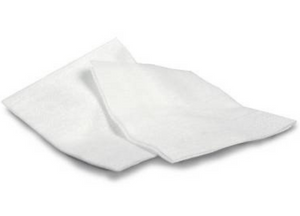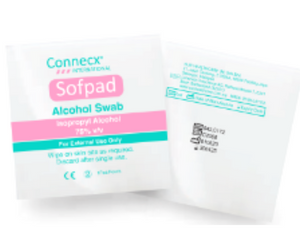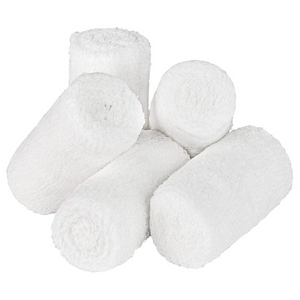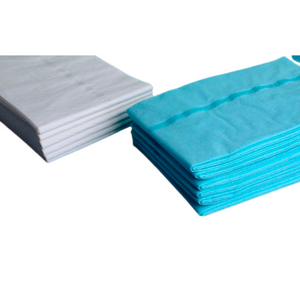12 Wound Care Supplies Every Medical Practice Must Have!
Medical professionals are responsible for providing care to the patients who come to them seeking treatment for their sicknesses, ailments, and injuries. Patients entrust doctors and nurses with their health and healing, so it is vital that medical professionals stay vigilant in their efforts and prepared for the diverse needs of their patients.
To be properly prepared for the treatment of various injuries and wounds, medical professionals should make a habit of keeping wound care supplies such as wound care bandages, wound dressing supplies, wound dressing kits adequately stocked and accessible, so they can treat their patients thoroughly and efficiently.
Here are the 12 wound care supplies that every medical professional should always have on hand to use as they care for patients’ injuries.
1. Gauze Sponges
are important and versatile supplies for patient wound care. These sponges can be used to absorb excess body fluids before dressing a wound, and can provide a sterile barrier against dirt and bacteria as well. There are many varieties of wound gauze that can be used depending on the type, size and location of the wound being treated, including:
- Standard gauze sponges for basic wound cleaning and care
- Self-adhering foam to stabilize the skin around a wound
- ABD pads for larger wounds
- Gauze rolls for basic wound care
- Non-adhering dressing for burns and surgical incisions
- Pre-sterilized, cotton-filled gauze
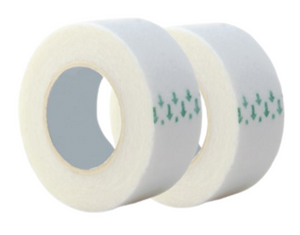 Connecx – Surgical tape
Connecx – Surgical tape
2. Medical Tape
Medical tape helps stabilize and secure the bandaging that is placed over a wound or surgical site. Medical tapes are typically self-adhesive and hypoallergenic, but come in a large variety of types that are suitable to different kinds of injuries and wounds a health care professional might encounter, including:
- Adhesive foam
- Athletic tape
- Cloth tape
- Pre-wrap
- Stretch tape
- Surgical tape
- Waterproof tape
Due to the variety of medical tapes currently available and their targeted applications, it’s a good idea to keep some of each type among your wound care supplies.
3. Non-Woven Sponges
Non-woven sponges are comprised of tightly pressed cotton or polyester and/or rayon fibers. These sponges are thicker and more durable than woven sponges, which makes them ideal for protecting wounds. Non-woven sponges leave minimal lint in a wound when they’re removed, making them a great option for packing open wounds and promoting optimal healing.
Nonwoven sponges are certainly a staple wound care supply for health care providers looking for high-performance products.
Connecx – Premium Sofpad Alcohol Swab
4. Alcohol Pads
Alcohol pads, sealed and packaged individually, are used to clean and prepare the skin for an injection or incision. Many wounds may require the patient to receive a shot or undergo a surgical procedure involving an incision. Alcohol pads help prevent bacteria from entering the body when the skin is pierced or lacerated.
Alcohol pads can be used to clean away debris, dirt, and bacteria from an open wound. They are definitely among the basic wound care supplies that all care professionals need.
Connecx Respinecx 3ply Face Mask with Earloop – Blue color
5. Earloop Face Masks
which secure easily and comfortably over the ears, are effective for protecting both the patient and the medical care professional. These masks provide a barrier against airborne pathogens and bacteria that could infect and further complicate the degree of a patient’s illness.
Masks should always be one of your high priority medical wound supplies, since they also help keep medical providers healthy and minimize the spread of contagious illnesses in a practice.
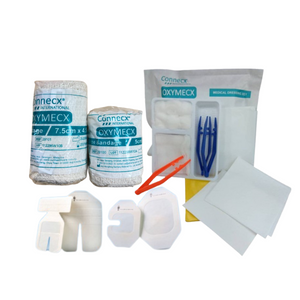
6. Bandages and Dressings
Most wounds will likely require properly dressed bandaging to protect the area and promote germ-free healing. Stocking a variety of different kinds of bandages and dressings helps medical professionals successfully treat wounds no matter their type, size, or degree of seriousness. Types of wound care bandages and medical dressing to keep on hand include:
- Basic transparent adhesive bandages
- Medicated bandages
- Dry gauze dressings
- Hydrogel dressings
- Hydrofiber dressings
- Foam dressings
- Alginate dressings

7. Suture Removal Kits
Many types of wounds may be closed by sutures, which need to be removed once the wound has closed and healed. Suture removal kits contain pre-packaged, sterile tools such as metal littauer scissors, forceps, and gauze needed to remove sutures safely. These kits are convenient, sterile, and help prevent inadvertent introduction of bacteria to a healing wound. Suture removal kits are important wound care supplies for protecting the integrity of treatment that’s already been applied.

Shirudo – Puresafe, Examination Powder Free Glove
8. Medical Gloves
Much like face masks, medical gloves help protect medical care professionals and their patients. Wearing gloves while treating an injured patient will prevent any transmission of bacteria to their wounds, as well as protect the medical professional from any infections or viruses that may be present in the blood or body fluids of the patient. Medical practices should keep a constant supply of both latex, and latex-free gloves in stock for the continued health and safety of themselves and their patients.
As with masks, basic wound care supplies like medical gloves protect both care provider and patient.
9. Gauze Rolls
Medical gauze rolls are used frequently as the first layer of dressing and bandaging of a wound. The bleached, loosely woven gauze can be used to absorb moisture or wick away fluids that will be absorbed in an outer bandage on the wound. There are different gauges of wound gauze, and medical professionals typically keep a variety stocked and available to best treat and dress the wounds they may encounter.
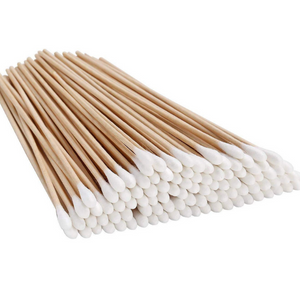
10. Cotton Tipped Applicators
Cotton tipped applicators have a wide array of uses in a professional medical environment. They can be used to clean the wound, as well as skin surrounding it. They are also useful for swabbing a wound to obtain a sample for testing to determine the presence of an infection. Cotton tipped applicators are useful in applying medicines or ointment to wounds as well, so they’re an important component of any wound care kit.
11. Medical Drapes
In the event a patient is suffering from a wound that requires surgical closure, medical drapes should be available for medical care professionals to use as a safeguard against infection. Drapes are disposable and impermeable, so they help isolate the injured area, and prevent bacteria from migrating into the wound during surgery. To prepare sufficiently for the more serious wounds they face, providers should include medical drapes in their wound dressing kits.
12. Cotton Balls
Cotton balls are frequently used for cleaning, sanitizing, and prepping wound sites before bandages or dressings are applied. They can also be used as a sterile method to apply medicines or ointments to a wound to ensure it stays clean and free of bacteria.
Cotton balls are an essential element of any wound dressing kit. Rayon and polyester balls are also available.
Wound care supplies are designed to protect patients and help them heal as quickly as possible after they’ve sustained an injury or undergone surgery. Accessible and adequate quantities of all the supplies needed for a vast range of wound types and scenarios, from wound gauze to wound bandages, undoubtedly set medical professionals up for successful wound treatment.


